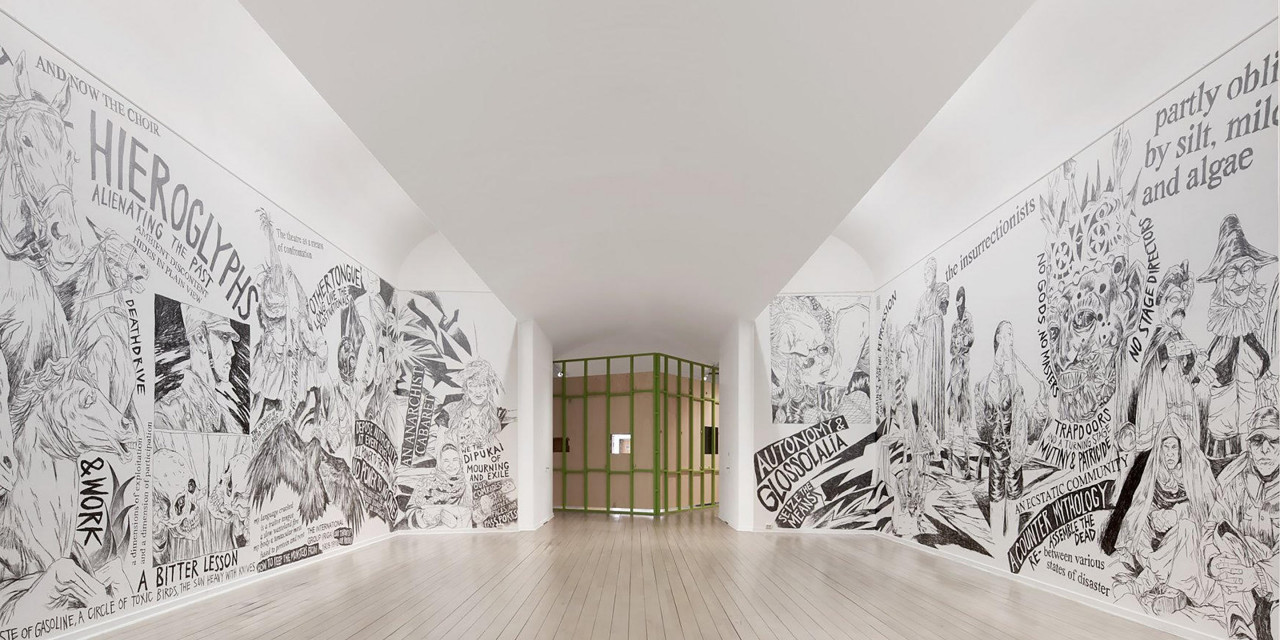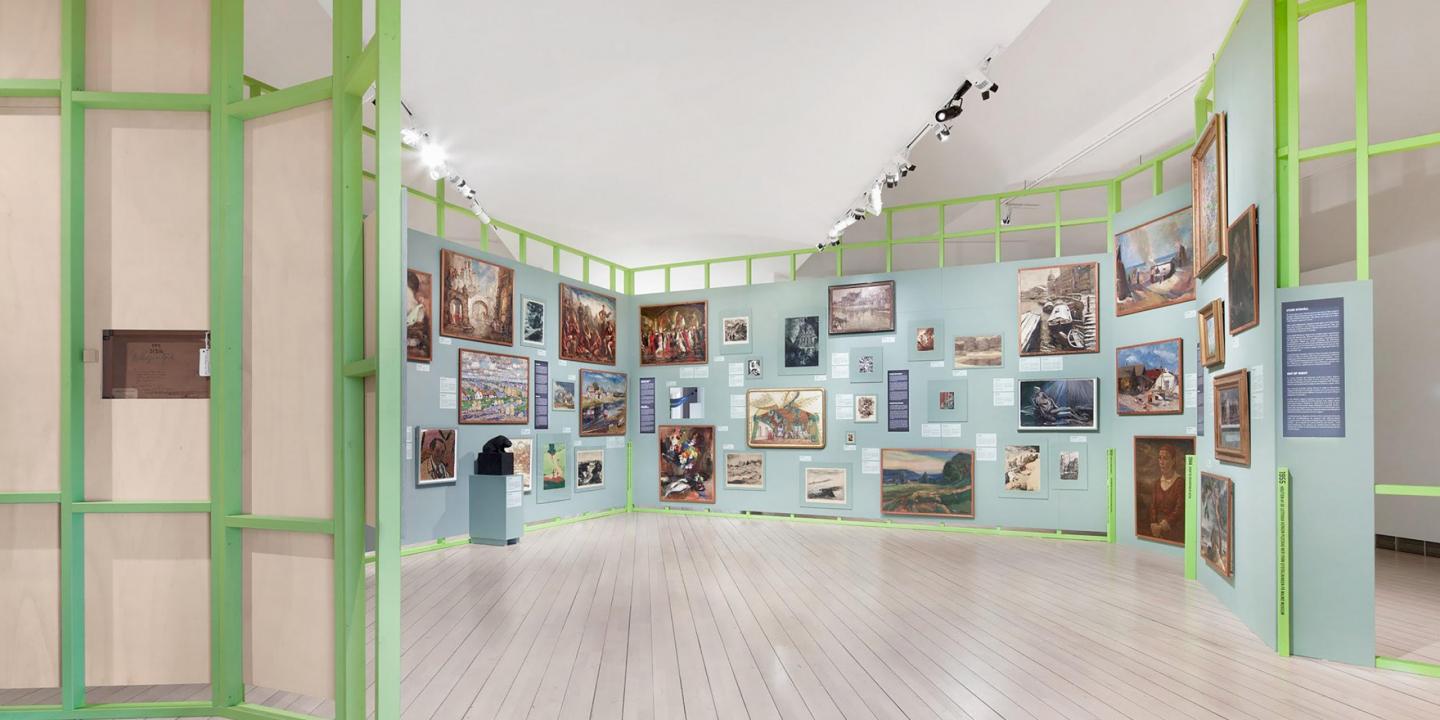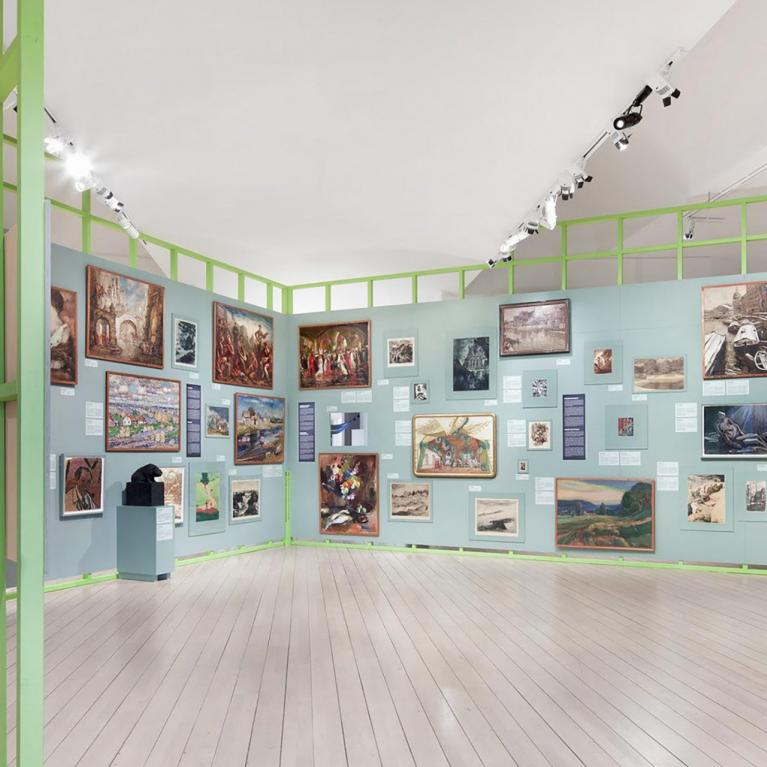The Latvian Collection of Malmö
In which ways are museums and artists vehicles for nation state building? How does collection-building intertwine with cultural diplomacy and politics of countries?
The Latvian collection of Malmö Konstmuseum was given to the museum as a donation in 1939 and was on permanent display until 1958. There are landscape paintings, portraits, still life, illustrations, scenography and images of war, primarily from the 1930s.
The collection was meant to be representative of contemporary art in Latvia at the time and it encapsulates a general zeitgeist toward thinking and developing ideas about what Latvia is through art. Marked by the authoritarian regime of president Kārlis Ulmanis and its subsequent cultural policy, the collection represents an inward gaze as well as national romanticist ideas praising Latvian soil and culture. The exhibition is addressing larger issues pertaining to nationalism and nation state building in the Baltic region at the same time acknowledging the fragility of smaller nation states and how they could act as antidotes to imperialism.

Originally shown at Malmö Konstmuseum the exhibition 'The Latvian Collection of Malmö' presents the collection in its entirety for the first time since the 1950’s alongside eight new commissions by artists who have researched the collection. The exhibition highlights overlooked narratives within the collection and looks at new ways of accessing the historic collection as a moment in time.
The newly commissioned works have become part of Malmö Konstmuseum’s permanent art collection, emerging as extensions and interpretations of the existing Latvian collection, providing windows into how it was perceived in 2022 for future curators, artists, and visitors. This way, the collection-building process stretches in time towards present and going beyond the borders of the Latvian nation state.
Commissioned artists:
Makda Embaie, Ieva Epnere, Santiago Mostyn & Susanna Jablonski, Ieva Kraule-Kūna, Lada Nakonechna, Jaanus Samma, Anastasia Sosunova and Asbjørn Skou
Artists in the original Latvian collection:
Jānis Aižēns, Augusts Annuss, Arturs Apinis, Jēkabs Apinis, Kārlis Baltgailis, Jānis Cielavs, Jānis Cīrulis, Elza Druja, Erna Dzelme-Bērziņa, Eduards Dzenis, Otomija Freiberga, Jāzeps Grosvalds, Arvīds Gusārs, Eduards Kalniņš, Kārlis Krauze, Valdemārs Krastiņš, Jānis Kuga, Ludolfs Liberts, Milda Liepiņa, Jānis Liepiņš, Jūlijs Madernieks, Marija Induse-Muceniece, Oskars Norītis, Jānis Plēpis, Janis Rozentāls, Pēteris Rožlapa, Ārijs Skride, Oto Skulme, Uga Skulme, Jānis Šternbergs, Arvīds Štrauss, Niklāvs Strunke, Erasts Šveics, Leo Svemps, Zelma Tālberga, Jānis Tīdemanis, Valdemārs Tone, Konrāds Ubāns, Johann Walter, Vilis Vasariņš, Ernests Veilands, Sigismunds Vidbergs, Vilhelms Purvītis, Kārlis Zāle, Teodors Zaļkalns and Rihards Zariņš



